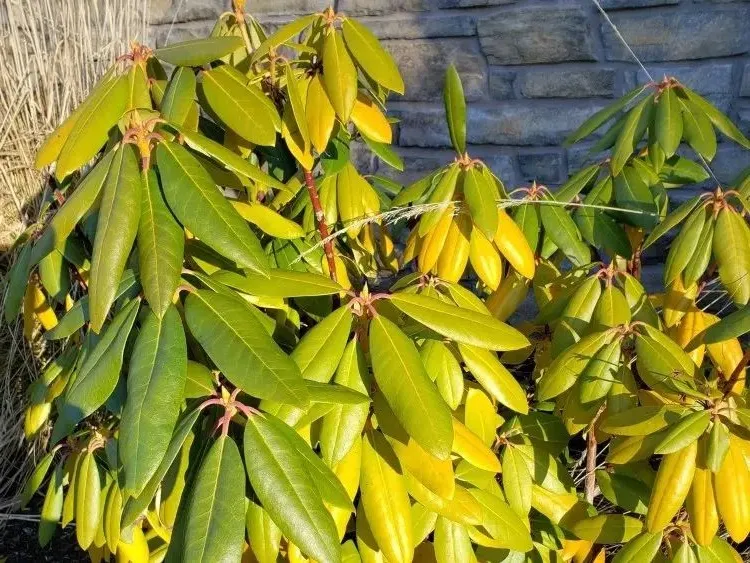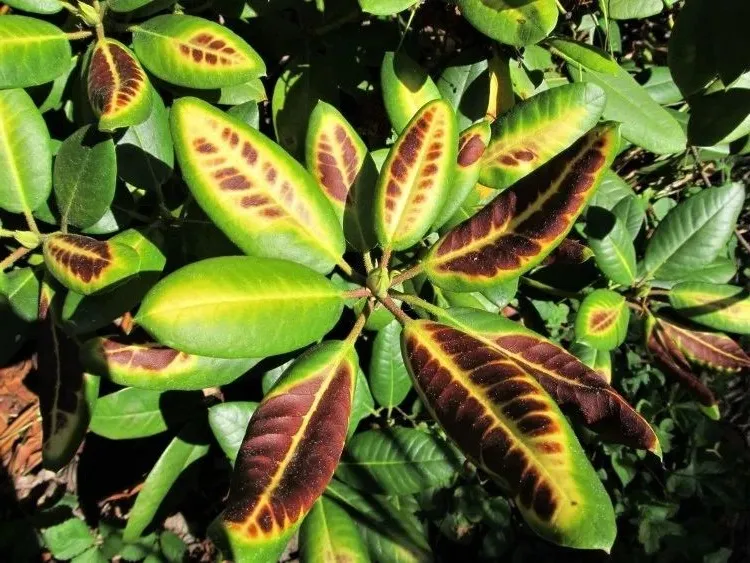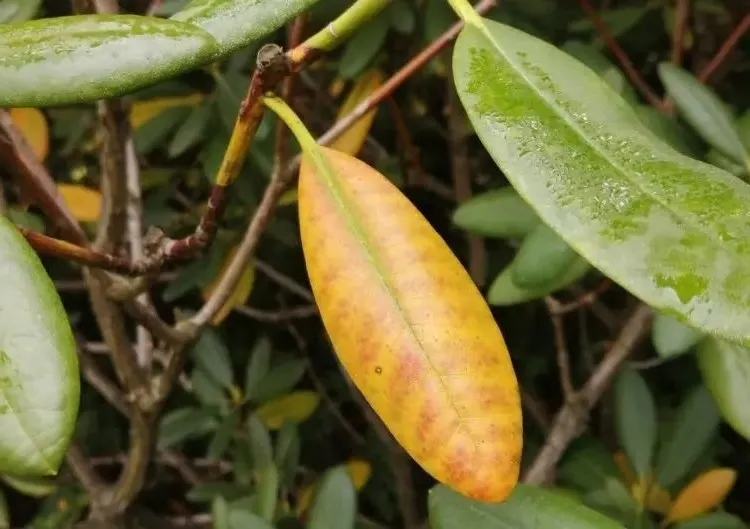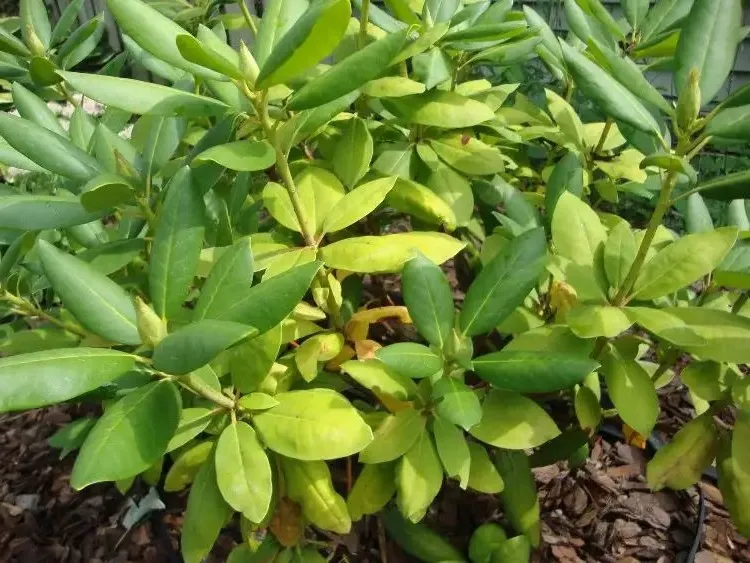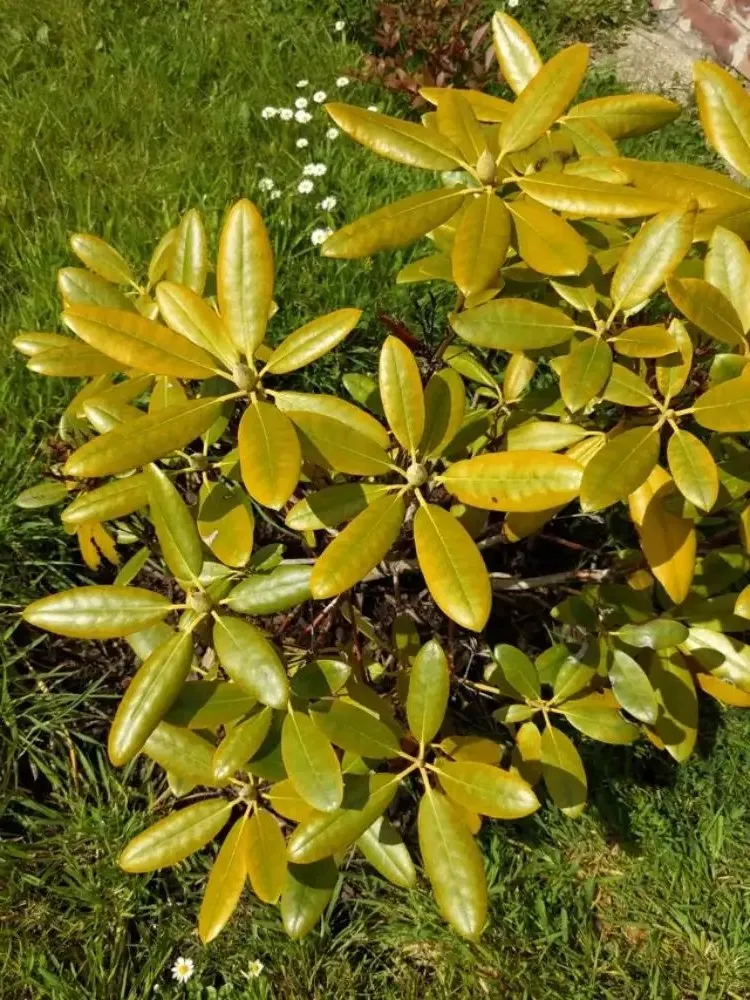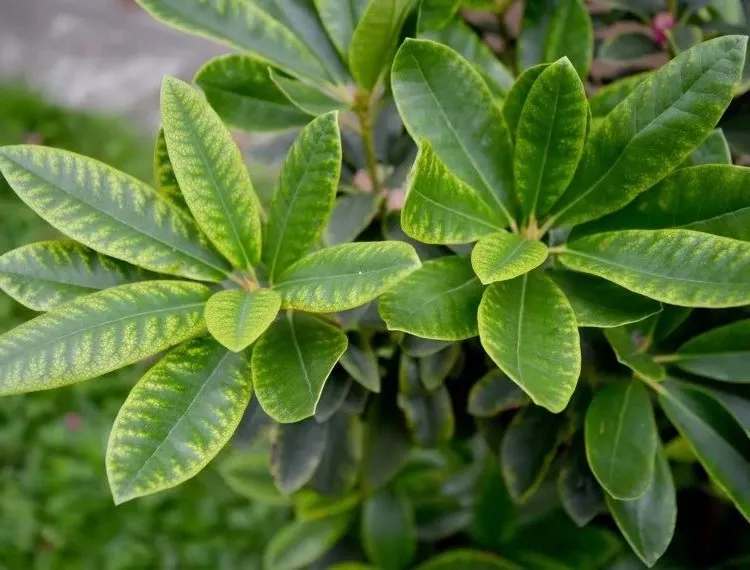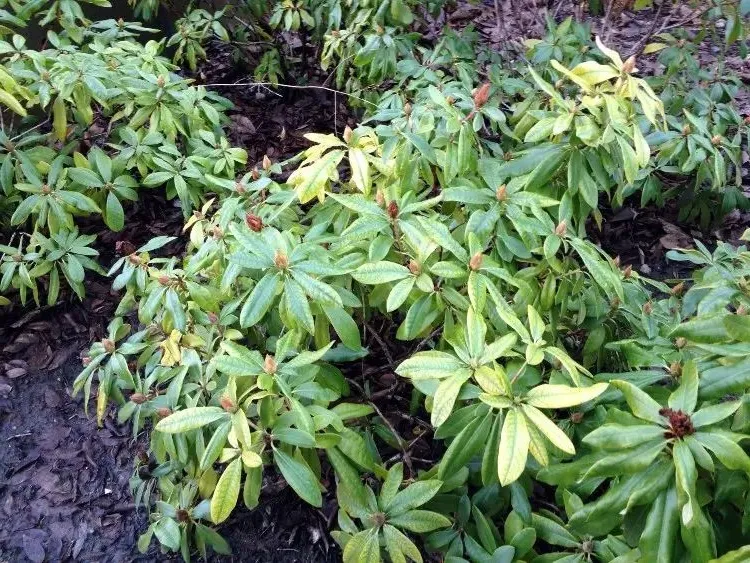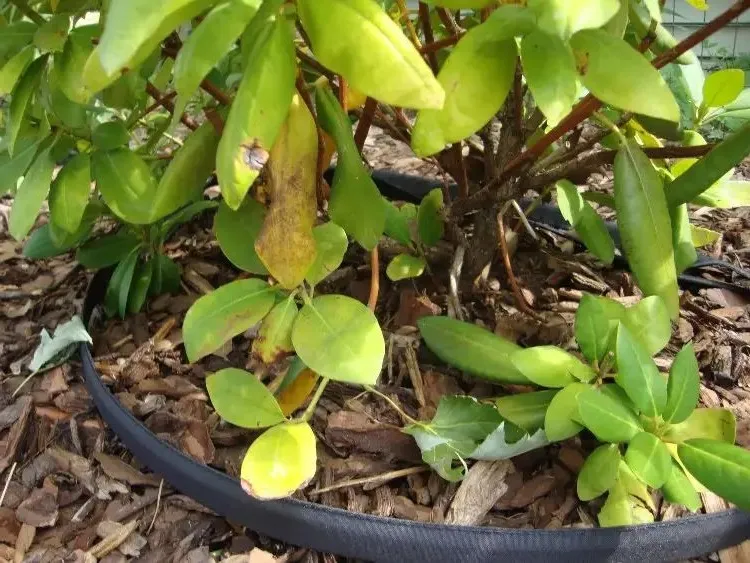Is your rhododendron getting yellow leaves in fall? There are a few possible reasons why this could be.
Why Is Your Rhododendron Getting Yellow Leaves?
The rhododendron reacts very sensitively to sun, soil conditions and diseases. However, its reaction is much slower than with other plants. If the leaves turn yellow, this is a sign that the problem has been going on for a long time. The possible causes include:
Too Sunny Location and Sunburn
The rhododendron was planted in the wrong location or something has changed in the meantime. The shrub grows best in the shade of tall trees. But if it suddenly gets sunny, its leaves can quickly burn and turn yellow. Think about it – did you change something in the garden so that the rhododendron needed full sun to thrive this summer?
Also read: Expert Opinion: Can You Prune Rhododendron in Fall? When? How to Prepare It for Winter?
Changes in Soil Composition
The rhododendron prefers acidic soil. If the pH value of the soil has increased in the last few months, the tree may develop yellow leaves. Think about it:
Have you added lime to the soil?
Have you watered the plant or neighboring plants with hard tap water? If the calcium content is high, the plant cannot properly absorb the necessary nutrients.
Have you given it a new fertilizer?
Did you incorporate soda into the nearby bed so that the rhododendron could absorb these substances through the irrigation water?
Measure the pH value of the soil or, best of all, have it checked in a laboratory. The experts there can also recommend how you can lower your pH and which minerals and trace elements are missing.
If adding special soil does not help, in the worst case scenario the tree will have to be transplanted.
Lack of Nutrients in the Soil
The rhododendron needs regular fertilization. If it rained frequently in the summer and the fertilizer was washed away, then nutrient deficiencies can quickly occur in the fall. In this case, the yellow leaves are a sure sign that the rhododendron has not received enough nitrogen. If the yellow leaves have a few green spots, then it may be due to iron deficiency.
There are a few things you can do to save the tree. The plant grows best in rhododendron soil – you can add this to the garden soil and quickly supply the necessary nutrients.
Young plants in particular can recover well from fertilizer errors. What is exceptionally important is that they receive a final, additional fertilizer in the fall to strengthen them.
Also read: Pretty Trees, Flowers & Shrubs for an Orange Garden in Autumn
Rhododendron Getting Yellow Leaves Due to Temperature Fluctuations
Large temperature fluctuations such as extreme heat and then a sudden burst of cold can damage the rhododendron. Strong winds and sudden frost are very dangerous for the shrub and can quickly lead to leaf loss. Changeable weather is not uncommon, especially in the months of October and November. To protect the shrub, you can mulch the soil and transplant it to a place in the garden that is protected from the wind.
Yellow Leaves After Heavy Rains in October
Heavy rains are not uncommon in fall. If the rainwater cannot drain away, waterlogging forms and the roots of the plant rot. They can no longer absorb nutrients and carry out photosynthesis
This is very dangerous for the rhododendron, and the entire bush can die if you do not react in time and improve the soil permeability. A good option is to incorporate sand or perlite into the soil. The sand layer will improve drainage, and perlite will aerate the soil in the fall.
Also read: Why Are My Monstera Leaves Turning Yellow? Reasons + Remedies
Rhododendron Getting Yellow Leaves Due to Chlorosis
If the rhododendron leaves are yellow, but the veins are green, this is a sign of chlorosis. This is not an illness caused by viruses or bacteria, but rather a nutrient deficiency. Most of the time there is a lack of iron in the soil, and you have to supplement it with special fertilizers. However, brown and yellow leaves are not the same. If the rhododendron is over-fertilized, the leaves will dry out and turn brown.
When Only the Lower Leaves Turn Yellow
In one case, however, the leaf drop is completely normal – if the rhododendron leaves turn yellow from below, then it is usually a natural progression. The shrub changes its foliage from bottom to top. When the leaves at the bottom wither, new ones sprout at the top.
The rhododendron is a fairly easy plant to care for. It is particularly sensitive to strong sunlight, lack of nutrients and soil with a high lime content. Its leaves turn yellow and, in the worst case, fall off completely.
What do yellow leaves, brown spots or white dots indicate in your oleander plant? Find out now!

